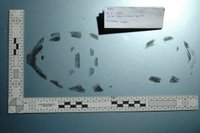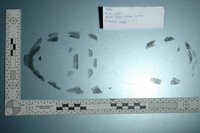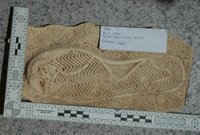Spectrophotometry
Today´s practical was going to be, as I found out on WebCT a while ago, about the thrilling subject of spectrophotometry (whatever.....).
You can imagine how surprised I was when looking through my papers as I found a line about the so called Beer-Lambert-Law. Were we going to have a useful practical on British beer?
I very soon had to find out that this law was not about how much beer Lambert can drink until he has to throw up. Actually, it was not about beer at all (what a disappointment!)
But once being there I thought it is rather impolite and quite embarrassing to leave, so I decided to stay.
Our main assignment was to find the concentration of a solution of chlorophyll. So we had two bottles of chlorophyll, which had the colour of those weird green jelly things children sometimes eat. The known solution was the one we used to verify our results - mixing them with distilled water in various different amounts (20, 40, 60, 80 and 100%) - to get a graph we could use to determine the absorbance of the unknown one.
Also, we had the spectrophotometer, which is a machine that tries very hard to look important and difficult whereas all it actually is, is a box you put your sample-filled cuvette in to then read the number it gives you on a little screen.
In conclusion, this was a fairly easy practical - so now let´s try to understand what we did.....
Cheers!
You can imagine how surprised I was when looking through my papers as I found a line about the so called Beer-Lambert-Law. Were we going to have a useful practical on British beer?
I very soon had to find out that this law was not about how much beer Lambert can drink until he has to throw up. Actually, it was not about beer at all (what a disappointment!)
But once being there I thought it is rather impolite and quite embarrassing to leave, so I decided to stay.
Our main assignment was to find the concentration of a solution of chlorophyll. So we had two bottles of chlorophyll, which had the colour of those weird green jelly things children sometimes eat. The known solution was the one we used to verify our results - mixing them with distilled water in various different amounts (20, 40, 60, 80 and 100%) - to get a graph we could use to determine the absorbance of the unknown one.
Also, we had the spectrophotometer, which is a machine that tries very hard to look important and difficult whereas all it actually is, is a box you put your sample-filled cuvette in to then read the number it gives you on a little screen.
In conclusion, this was a fairly easy practical - so now let´s try to understand what we did.....
Cheers!






